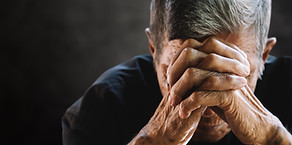The Hope Institute
A 501 (c)(3) Nonprofit
Services and Research

For Individuals or Large Groups
Assessments
Adult Hopefulness Scale
Coming soon! Individuals will be able to take the Adult Hopefulness on this site for free and receive an overall score. For a small fee, a more in-depth report will be provided. We provide a discount of 50% for educators and students for the in-depth report. The small fee is used to sponsor hope assessments and interventions for individuals and groups who are economically challenged and among those most in need of hope.
Take the Test (Coming Soon!)
This test yields an overall score that represents the hopefulness of an individual. Stated differently, this test will focus on the noun form of hope, the trait or character reference implied when we inquire about someone's "hopefulness"
The following major sub-scores are also provided.
-
Mastery Hope
-
Attachment Hope
-
Survival Hope
-
Spiritual Hope
We also reference the following minor scales that constitute the major subscales:
Mastery Hope
-
Goal Progress
-
Goal Support
Attachment Hope
-
Social Connectedness
-
Basic Trust
Survival Hope
-
Personal Coping
-
Personal Liberty
-
Coping Support
Spiritual Hope
- Spiritual Inspiration
- Spiritual Presence
-
Spiritual Protection
Higher scores are correlated with a greater sense of basic trust, a reduced sense of personal vulnerability, and higher achievement motivation.
Norms are based on data from over 2,000 adults from 72 countries. This assessment tool is currently available in English. Additional translations are possible for an additional fee.
Scale Length: 40 Items
Time Required: 7-10 minutes.
Potential Applications at the Group Level:
-
Government personnel selection (e.g., security, diplomacy, and regulatory positions)
-
Recruitment for high-stress occupations (e.g. airline pilots, air-traffic controllers)
-
City, county, or state-level agency personnel selection (e.g., Police and Fire Depts.)
-
Military, leadership, and managerial personnel selection

For Individuals or Large Groups
Assessments
Contact us for more information.
Adult Hopelessness Scale
The Adult Hopelessness Scale is designed to assess nine forms of hopelessness.
This model of hopelessness was derived from Dr. Scioli’s four-part model of hope (mastery, attachment, survival, and spirituality). The "critical mass"
Three forms of hopelessness result from core disruptions of attachment, survival, or mastery needs (feelings of alienation, doom, or powerlessness).
Six additional forms of hopelessness result from blended disruptions of two major hope-related needs (e.g., feeling oppressed due to breakdowns in mastery and attachment).
This measure yields ten scores:
-
Total Hopelessness
-
Doomed
-
Helpless
-
Captive
-
Alienated
-
Forsaken
-
Uninspired
-
Powerless
-
Oppressed
-
Limited
The contents of this scale were derived using formal test development procedures to assure reliability and validity. Norms are based on responses from more than 500 individuals.
We can offer a 45-item standard version, or a slightly longer 61-item version with an embedded “false hope” subscale. The false hope scale was designed specifically for the hopelessness scale, to correct scores that may be distorted by an individual faking hopefulness.
Scale Length: 45 or 61 Items. Time Required: 12-15 Minutes
Potential Applications at the Group Level
-
High-School (secondary-level) depression and suicide screening programs
-
College/University depression and suicide screening programs
-
Military or other government-based depression and suicide screening programs
-
Hospital and clinic evaluations, include intakes and discharge evaluations.

Currently in Development
Assessments
At The Hope Institute, we are
developing two additional tests
for adults. Contact us for more
information.
1. State Hope Scale
This test is being designed for individuals dealing with harm, threat, or loss. The test will allow individual monitoring of hope levels during the process of dealing with these stressful events.
This test will focus on the active, verb form of hope, more simply defined as "hoping". The test provides a measure of how much (or little) hope has been activated meet new or ongoing stressors.
Specifically, the test provides an overall, present-moment hope score, as well as the following sub-scores:
-
Attachment-Activated Hope
-
Coping-Activated Hope
-
Mastery-Activated Hope
-
Spiritually-Activated Hope
Our data shows that higher scores are correlated with fewer symptoms of depression, absence of suicidal thoughts and impulses, as well as feelings of reduced anxiety, and loneliness.
Norms are based on data from over 16,000 adults in 121 countries.
This assessment tool is currently available in English. Additional translations are possible for an additional fee.
Scale Length: 40 Items
Time Required: 7-10 minutes.
Potential Applications at the
Group Level
-
Healthcare processes and outcomes (insurance co., hospital, residential facility, clinic)
-
Government and military personal assessment (mental health screening and monitoring)
-
Pharmaceutical product development (e.g., clinical trials and/or compliance)
-
Nonprofit funding initiatives requiring evidence-based methods (data collection)
2. Transformative Hope Scale
This scale is intended for special circumstances, including cases involving life-threatening or terminal illness, old-age, severe trauma, or profound loss.
This scale may be used as a “stand-alone” tool or combined with the Current State Hope
Scale.
Higher scores are correlated with religious and spiritual coping strategies (e.g., shared control by the self and a higher power), experiences of spiritual transcendence, and more frequent daily spiritual experiences.
Norms are based on data from over 2,000 adults. The scale has been completed by individuals in 72 countries.
This assessment tool is currently available in English. (Additional translations can be considered.)
Scale Length: 12 Items
Estimated Time Required: 2-3 Minutes
Potential Applications at the Group Level
-
Healthcare settings specializing in life-threating illnesses
-
Hospice or palliative care settings
-
Facilities for frail elders (e.g. assisted living or nursing homes)
-
Organizations addressing trauma and loss (e.g. Veterans Hospitals, Funeral Services)